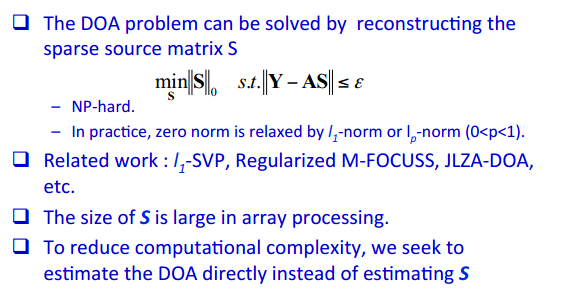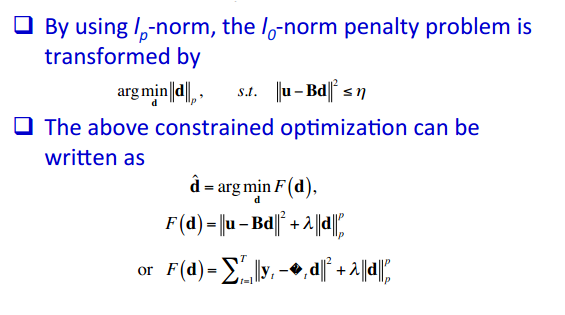Invited by the Communication Acoustics Laboratory of IACAS, Prof. Xiao-Ping Zhang from the Ryerson University, Canada made a lecture titled “A New Direction-of-arrival Estimation Method Based on the Regularized Sparse Variable Projection Optimization” on Dec. 26 at Conference Room 218 of Dezhao South Building.
In Prof. Xiao-Ping Zhang’s lecture, he introduced a new low computational complexity direction-of-arrival (DOA) estimation method based on the regularized sparse variable projection (SVP) optimization.
The new method, i.e. SVP-lp algorithm, estimated a sparse indicative vector (SIV) that indicated the DOA from each visual source corresponding to DOA sampling space.

Problem Formulation
Different from existing sparse signal representation (SSR) methods for the DOA estimation based on joint-sparse signal representation (JSSR) to reconstruct signal sources themselves, the new SVP-lp method simplified the JSSR problem as a single sparse signal representation (SSSR) problem by reconstructing a SIV instead of all signal sources. The SVP function was regularized by lp<1 norm.

SVP-lp algorithm
Then Zhang formulated the SVP optimization as an unconstrained optimization problem, which could be solved iteratively. It was proved that the new SVP optimization algorithm satisfied the local convergence property and the convergence rate was linear.
The experimental results exhibited that the new method had higher accuracy and much lower complexity compared to existing SSR algorithms and traditional subspace based methods.


